Dear visitors,
Due the reconstruction works, as well as preparation of the new exhibitions, Armenian Genocide museum will be closed till April 20, 2014.
Best regards,
The Armenian Genocide Museum – Institute
The Guardian published the story of 106 years old Armenian Genocide survivor
25.01.2014
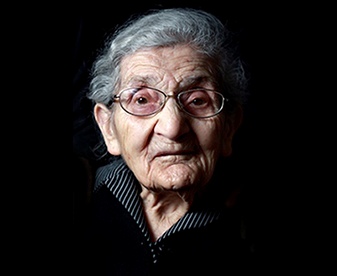 The Guardian refers to the story of 106 years old Armenian Genocide survivor in a special project «First World War: memories of the last survivors» with four other European newspapers.
The Guardian refers to the story of 106 years old Armenian Genocide survivor in a special project «First World War: memories of the last survivors» with four other European newspapers.
«The diminutive old woman does not go out in Marseille much any more. She hunches over a cane and is spoilt, mollycoddled by her daughter and grandchildren. Ask her about her childhood, and she becomes perfectly alert. Ovsanna Kaloustian is 106 years old, and one of the last survivors of the Armenian genocide of 1915. As a memory bearer, she is perfectly aware of the role she has to play almost a century later. "God let me live this long so that I could tell the story," she says».
The Book of Whispers” by Varujan Voskanian
21.01.2014
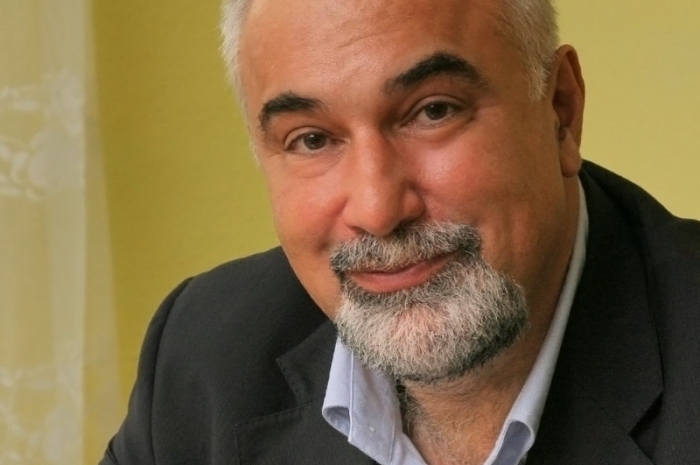
The novel “The Book of Whispers” by Romanian writer of Armenian origin Varujan Voskanian was published in 2009, in Bucharest and became one of the highest scored and awarded of the publishing year.
“The Book of Whispers” narrates about The Armenian Genocide and the horrors of 20th century. This shocking work received high evaluations from the international media and literary circles for presenting with almost documentary accuracy the horrors of Genocide and stories of Armenian resettlers, trying to survive in foreign lands. The book was translated in Armenian, French, Spanish, German, etc.
“This book deserves to be nominated for Nobel Prize by every writer in the world”, - said the chairman of Israeli Writers’ Union Herzl Hakak, in Tel Aviv, while presenting the book in 2012. “This award will reward the writer, who achived to create a classic literary work and, at the same time, give terrific and living testimony of the sufferings of the Armenian people and the Armenian Genocide. Such an award would focus the world's conscience on this disaster and would deepen the process of recognition of this horrible crime”, - said Herzl Hakak.
“The Armenian Genocide. The Mechanisms of Decision-making and Implementation” by Arsen Avakyan was published by Armenian Genocide Museum-Institute
09.01.2014
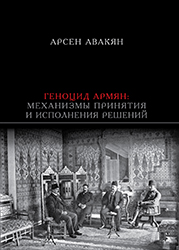
The Armenian Genocide Museum-Institute has published the work of Doctor of Historical Science Arsen Avakyan “The Armenian Genocide, The Mechanisms of Decision-making and Implementation”. The book reveals the mechanisms of decision-making and their implementation during World War I and the years after war , based on archives and primary sources.
The book analyzes deeply the inner structure of The Committee of Union and Progress, which made the decision of Armenians extermination, the intergroup configuration of power in the central body of this party, and the structure and creation process of "Special Organization". It also covers the responsibility of Young Turks and the Parliament in destruction the Christian population all over the Ottoman Empire during World War I.
The book also discusses the participation of the army in the genocide against the Armenian population. Some documents from Turkish archives have been put in scientific circulation, including legislation of Ottoman Parliament regarding the deportation of the Armenians, the orders of Young Turks signed by Talaat Minister of Internal Affairs, and other ministers, as well as quotations from the records of court hearings about the deportation of Armenians and the massacres, which was going on during the deportations. The book is addressed to historians, researchers studying the history of World War II, orientalians, as well as to wide audience.
The Status of the Armenian Deportees Settled In Syria as a Result of the Armenian Genocide and the Armenian - Arab Relations (1915-1924), by Narine Margaryan
21.12.2013
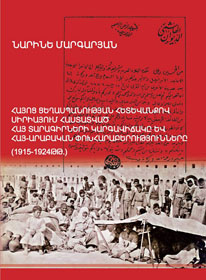
The book of the Armenian Genocide Museum-Institute scholar Narine Margaryan, PHD was published. The book titled “The Status of the Armenian Deportees Settled In Syria as a Result of the Armenian Genocide and the Armenian - Arab Relations (1915-1924)”.
The book sheds light on the problems of the Armenians settled in Syria after the Armenian Genocide. It researches the attitude of the Syrian Arabs to the Armenians. At the same time it focused also on the treatment of the Arab governors and chieftains to the Armenians, then the policy under Emir Feisal rule (1918-1920), and in the first years of the French mandate (1920-1924). It discusses the development of the relations between the Arabs and the Armenians during those years.
This book studies the main tendencies of Armenian involvement in the social and political life of Syria, and process of organizing and reforming the Armenian community in Syria.
The work is addressed to historians, orientalians, diplomats, as well as to a wide public.
The South African Responses to the Armenian Genocide
Dedicated to the memory of Nelson Mandela
11.12.2013
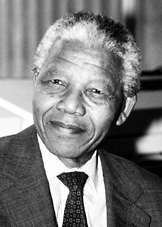
As a result of the collecting works of the Armenian Genocide Museum-Institute, a rare document was found, which witnesses a humanitarian assistance of a South African tribe to the Armenian orphans in 1921.
One of the reverends of the Independent church of South Africa, from the name of his community of 250 people, made a contribution to Armenians, who were victims of the Turkish barbarity, in the case when they were also in poor conditions.
This is a unique testimony of the protection of human rights and humanism, which recognizes no racial and geographic restrictions or boundaries.
Below we present the whole article without any changes.
The border between Armenia and Turkey based on 1922-1925 American and European maps
10.12.2013
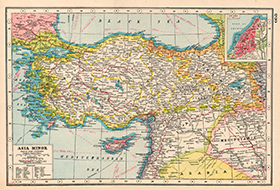
The Armenian Genocide Museum-Institute collection has been enriched by new cartographic materials issued in the first half of the 1920s. The American, British and German cartographic materials are of utmost interest because they include the borders of the already declared Republic of Turkey. Based on those maps the Eastern border of the Turkey coincided with the one defined in the Arbitrary Decision of Woodrow Wilson (1856-1924).
Those cartographic materials are the best evidence that even after the sovietization of the Republic of Armenia and the declaration of the Republic of Turkey, the borderline between Armenia and Turkey was the one defined by the American President in November 1920, which was not amended or voided by any international agreement thereafter.
AGMI Academic Secretary Tehmine Martoyan at Ruhr University Conferencev
10.12.2013
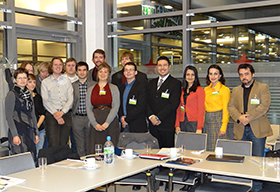
Armenian Genocide Museum-Institute major researcher and academic secretary, Tehmine Martoyan took part in the Young Scholars Conference “Ideology and State-induced violent Crimes”, which was held on December 3-4 at Ruhr University in Bochum, Germany. The conference was organized by Ruhr University Institute for Diaspora and Genocide Studies.
Tehmine Martoyan presented a report entitled “Kemalism and the Christian Minorities: the Extermination of the Armenian and Greek population of Smyrna as a Manifestation of the Turkish State Policy (September 1922)”.
At the opening ceremony, Director of Ruhr University Institute for Diaspora and Genocide Studies, Professor Mihran Dabagh delivered a speech. Young researchers from Canada, Great Britain, Italy, Hungary and Ukraine presented their reports.
The Conference aimed to present the results of scientific researches of the young researchers in the field of mass violence, genocide studies, history, sociology and cultural studies to the international professional.
RF President Vladimir Putin visited Tsitsernakaberd Memorial
02.12.2013
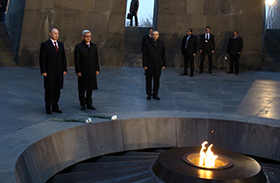
RF President Vladimir Putin, together with RA President Serzh Sargsyan and a number of high-ranking Russian and Armenian officials, visited Tsitsernakaberd Memorial Complex within the framework of his state visit to Armenia.
Russian President laid a wreath at the memorial of the Armenian Genocide victims.
RF President and the Russian delegation accompanied with the Armenian side put flowers at the Eternal Fire and honored the memory of the innocent victims with a minute of silence.
The director of the Armenian Genocide Museum-Institute Hayk Demoyan presented the brief history of the Armenian Genocide and the construction of the Armenian Genocide Museum and Memorial to the Russian President and his accompanying delegation.
The director of the Armenian Genocide Museum handed to the Armenian President Serzh Sargsyan and Russian President Vladimir Putin, golden replicas of the medals, which were issued in Petrograd with charity purposes, to help the survivors of the Armenian Genocide of 1915.
The medal depicts the coat of arms of the Russian Empire with the two-headed eagle and the traditional Armenian cross and carries the inscription which reads “From the Russians to the Armenians in the time of great peril.”
Recall, that on April 14, 1995, the Russian State Duma adopted a statement recognizing and condemning the Armenian Genocide.
80th anniversary of Farnz Werfel's "The Forty Days of Musa Dagh" first publishing celebrated in Vienna
28.11.2013
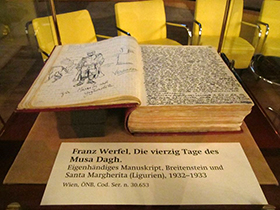
On 26th November, on the occasion of 80th anniversary of the first publishing of the famous novel by the Austrian writer Franz Werfel "The Forty Days of Musa Dagh", a cultural ceremony was organized in Vienna, by the joint efforts of the Armenian embassy in Austria, the Armenian Genocide Museum Institute, and the community of the Armenian Apostolic Church in Austria. The Austrian radio, The Austrian Literature Society and «Franz Werfel» committee, also participated in this organization.
The event was attended by representatives of the Armenian community in Austria, and Austrian intellectuals. The welcome speech was told by Ambassador Extraordinary and Plenipotentiary of Armenia in Austria Mr. Arman Kirakosyan.
During the event director of the AGMI Dr. Hayk Demoyan presented the photographs of the exhibits from Armenian Genocide Museum collection, related to the heroic Resistance of Musa Dagh.
The event was followed by a concert. Specially for the occasion the original manuscript of Franz Werfel’s famous novel “The Forty days of Musa Dagh”, was brought from the Austrian National Library, and was presented to the attention of the audience.
Dr. Hayk Demoyan, the Secretary of the State Commission, Meets Representatives of Armenian Community in Paris
21.11.2013
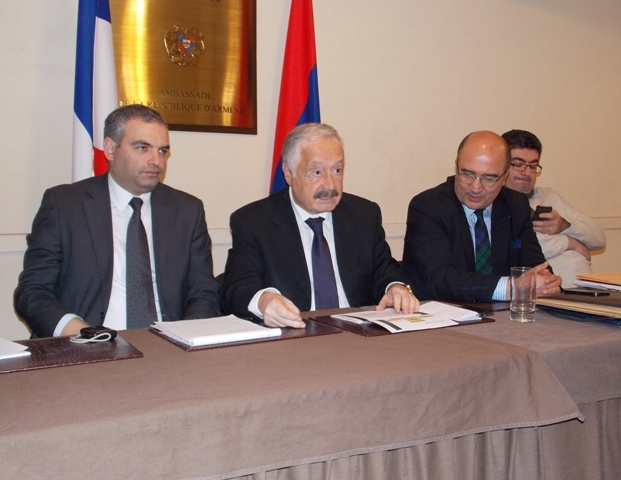
On 14th November, at the Armenian embassy in France, Dr. Hayk Demoyan, the director of the Armenian Genocide Museum-Institute and the Secretary of the State Commission on coordination of the activities dedicated to the 100th anniversary of the Armenian Genocide, met representatives of Armenian associations in France.
Together they discussed the schedule and headlines of the events that would be held in Paris and other French cities over the next two years. They also discussed the offers and presented projects related to the overall strategy of the Centennial events of the Armenian Genocide.
The meeting participants agreed to cooperate and exchange information about the events, which will be organized till 2015.
The meeting was also attended by the Ambassador Extraordinary and Plenipotentiary of Armenia to France Vigen Chitechian.
The book “Armenian Genocide from the beginning to end” by Danish historian Matthias Bjørnlund
16.11.2013
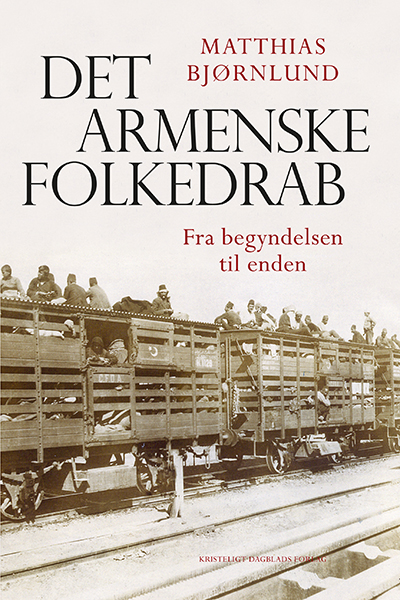
The book “Armenian Genocide from the beginning to end” (Det armenske folkedrab fra begyndelsen til enden) by Danish historian and expert on comparative genocide Matthias Bjørnlund was published in Denmark , which introduces to the Danish readers irrefutable evidences and materials on the Genocide made against the Armenians in Turkey in 1915-1923.
The book “The Armenian Genocide from the Beginning to the End” was published by Kristeligt Dagblads Forlag in 2013. The book covers the entire history of the Armenian Question and the Armenian genocide, from the reforms and massacres of the 19th century to the 1920s and the aftermath of the genocide.
Based on a wealth of archival sources, contemporary publications, and the most recent international research, it is an ambitious attempt to write the story of the destruction of the Ottoman Armenians as world history, as a series of events that affected a generation of politicians, intellectuals, and ordinary people, from Scandinavia to Australia. The book has been well received by the Danish press, with one reviewer calling it "a monument over the Armenian genocide".
The report of Matthias Bjørnlund "Danish Archival Records on the Armenian Genocide" at the International conference «The Armenian Genocide and the Scandinavian Response” , April 20, 2011, Yerevan.
Conference dedicated to the Armenian Genocide Centennial in Gyumri
13.11.2013
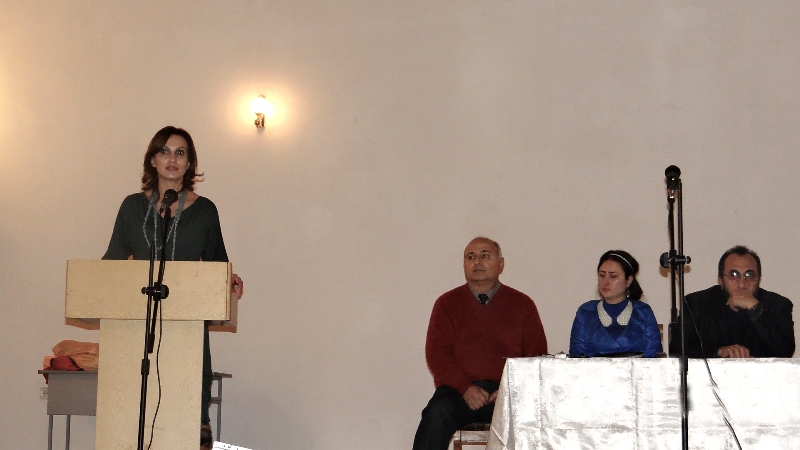
The Armenian Genocide Museum & Institute researcher Tehmine Martoyan participated in the Conference dedicated to the 100th anniversary of the Armenian Genocide, which took place in Gyumri on 12th November 2013.
The Conference organized by the “Christian Education Centre” in Shirak region was attended by Shirak Diocese Michael Bishop Ajapahyan, leading researcher of the Institute of Archeology and Ethnography of the National Academy of the Republic of Armenia, doctor of historical sciences Haroutyun Maroutyan, Academic Secretary of the Armenian Genocide Museum-Institute, PHD in history Tehmine Martoyan, Armen Gevorgyan the grandson of Armenian revenger Artashes Gevorgyan, delegate Armen Aghababyan and others.
Armenian Genocide Museum Institute and Canadian Museum for Human Rights Signed
Memorandum of Understanding
07.11.2013
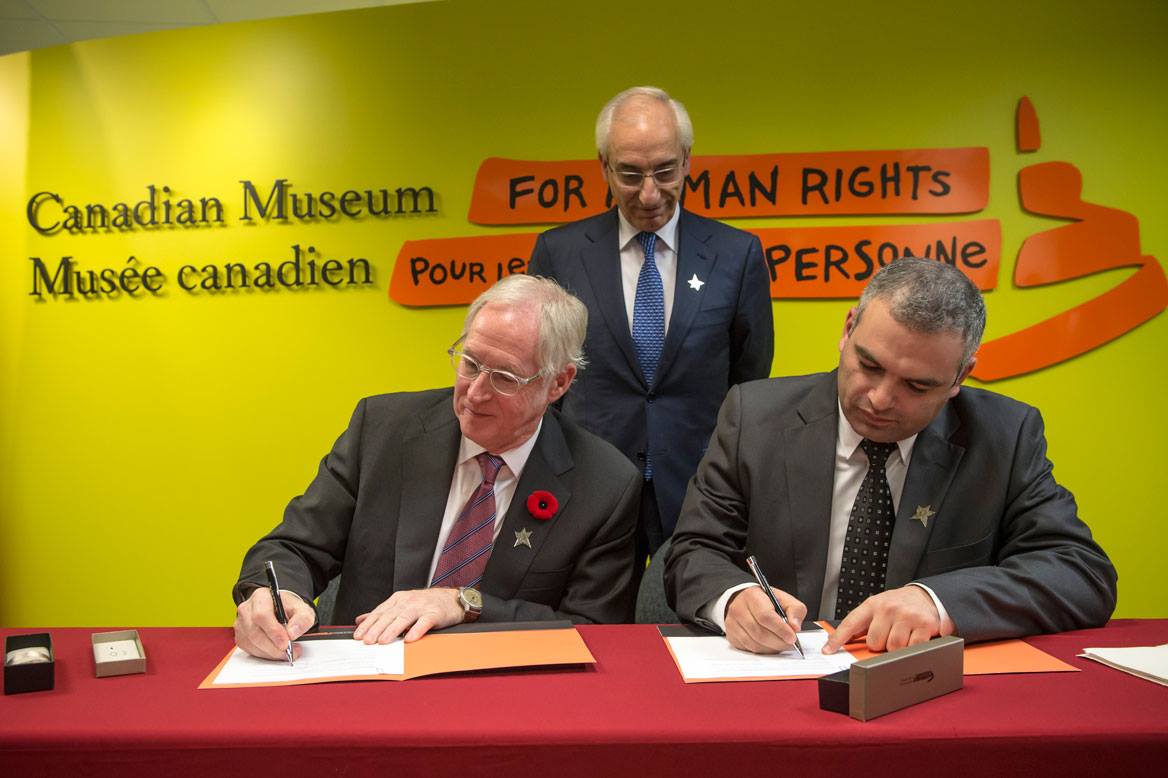
On November 7, the Canadian Museum for Human Rights (CMHR) and the Armenian Genocide Museum Institute (AGMI) signed a Memorandum of Understanding, in Winnipeg, Canada. The official signing of the MOU between the CMHR and AGMI is thanks to the assistance of the Zoryan Institute of Canada – a Canadian organization which advances scholarship and public awareness relating to issues of universal human rights, genocide, and diaspora-homeland relations.
The objective of the MOU is to exchange knowledge and expertise, educational materials, and exhibitions with respect to human rights, share research and advice, cooperate to advance the academic study of human rights and reconciliation, the Armenian Genocide and its effects, and processes seeking justice and reconciliation, and work together to educate people on issues of human rights, in both national and global contexts. The two sides also agreed to organize an exhibition, dedicated to the Armenian Genocide, at the Canadian Museum of Human Rights (CMHR) in 2015.
The contract was signed by Dr. Hayk Demoyan, Director of the Armenian Genocide Museum Institute (AMGI), and Mr. Stuart Murray, President and CEO of the Canadian Museum for Human Rights (CMHR). The signing ceremony was attended by Mr. Armen Yeganian Ambassador Extraordinary and Plenipotentiary of the Republic of Armenia, President of the Zoryan Institute Mr. Gurgen Sargsyan, and representatives of the Armenian community in Canada.
Discussion about Aurora Mardiganian took place in Toronto
07.11.2013
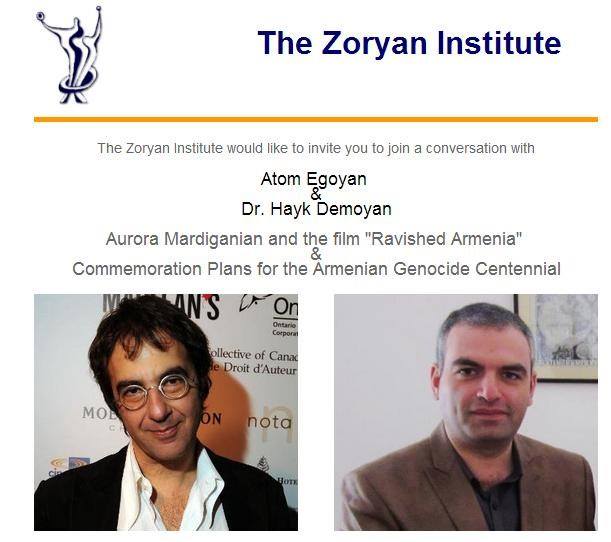
On 7th November at St. Gregory Armenian Catholic Church in Toronto, Canada, a conversation took place with Dr.Hayk Demoyan, Director of the Armenian Genocide Museum Institute (AGMI), and internationally renowned Canadian filmmaker Atom Egoyan about Aurora Mardiganian and the film "Ravished Armenia" and Commemoration Plans for the Armenian Genocide Centennial. The conversation was organized by Zoryan Institute.
During the discussion the (AGMI) director Dr.Hayk Demoyan mentioned that the story of Aurora is one of the many impressive stories that could be told about the history of the Armenian Genocide “Aurora’s story it is really one of the impressive stories to tell overall the story of the Armenian genocide. Truest story you can explain everything. That is why, as far as I know, Turks started show an interest to this story, because it is very powerful, it is difficult to deny”.
Filmmaker Atom Egoyan talked about the silent movie “Auction of Souls”, which is a Hollywood film, produced in1918 and based on the stories told by the Armenian Jeanne D’Arcy` Aurora Mardiganian, and the disappearing of the tape.
During the conversation a clip from the original silent film “Auction of Souls” was shown. A clip from an interview with Avrora Mardiganian made by Zoryan Institute in the late 1980s, was also shown.
At the end, Dr. Demoyan, as Secretary of the State Committee Coordination the Events of 100th Anniversary of the Armenian Genocide, gave an update on the planned centennial activities.
You can watch the conversation here.
Presentation of Kate Royster’s book «Karen Jeppe and the Armenians» held in Denmark
06.11.2013
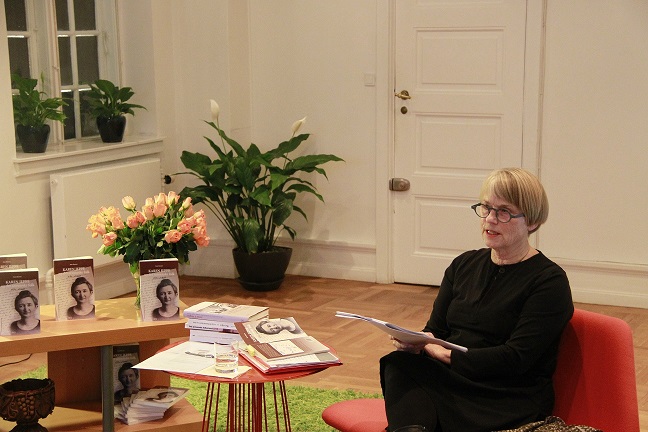
The presentation of the book “Karen Jeppe and the Armenians: a life a call” by Danish writer Kate Royster , took place on November 6th, at the Armenian Embassy in Denmark. The event was attended by representatives of the Armenian community and Danish intellectuals.
In his welcoming speech, the Armenian Ambassador to Denmark H. Aghajanyan, indicated that the chosen date for the presentation is not a result of coincident. Last year on the same day was the 130th anniversary of Maria Jacobsen, the mother of Armenian orphans, and at that day the exhibition “The Armenian Genocide and the Scandinavian response” was opened in The Royal Library in Copenhagen, which was organized by The Armenian Genocide Museum-Institute.
In his speech, the ambassador recalled that recently the Danish prestigious newspaper «Kristeligt Dagblad» published several articles related to the Armenian Genocide, and one of them was “The Armenian History is Our History”, adding that because of Maria Jacobsen and Karen Jeppe, a lot of Danish people accept the Armenian history as part of their history.
The presentation of the book “Ravished Armenia” in Moscow
05.11.2013
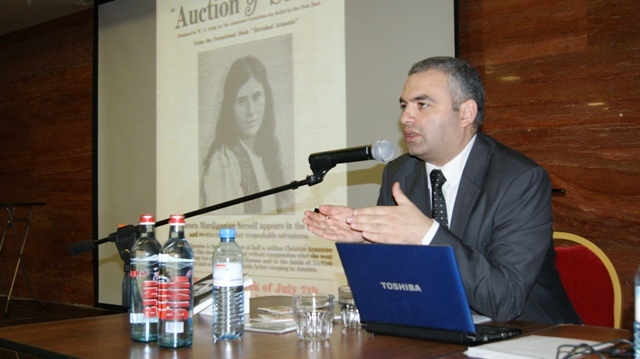
With the blessing of New Nakhichevan and Russian Diocese of the Armenian Archbishop Yezras Nersisyan, the presentation of the book “Ravished Armenia” , published by the Armenian Genocide Museum-Institute, took place in the monastic complex, in Moscow, on 2nd November 2013.
During the event a lecture was given by the director of the Armenian Genocide Museum-Institute Doctor of Historical Sciences Hayk Demoyan. An episode of the silent movie "Auction of Souls", which is based on the stories told by the Armenian Jeanne D’Arcy` Arshalouys (Avrora) Martirosyan and produced in 1918 in Hollywood, was also introduced during the presentation.
AGMI has published Russian edition of the “Ravished Armenia” book
05.11.2013
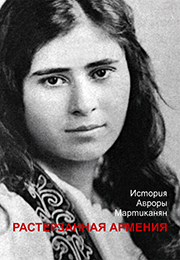
Armenian Genocide Museum- Institute has published the Russian translation of the “Ravished Armenia” book by Aurora Mardiganian.
The book is the memories of Armenian Genocide survivor Aurora Mardiganian, from Chmushgazak, the personal tragedy of a young girl as a victim of Turkish genocidal policy.
The story of Aurora Mardiganian is similar to stories of thousand Armenians who were saved from the Turkish violence by miracle. But at the same time, her story has a unique feature. Being saved from Genocide, Aurora Mardiganian settled in the U.S., and in 1918 published the book “Ravished Armenia” based on her own memories. In the same year the film “Ravished Armenia or Auction of Souls” was produced in Hollywood, and was the first movie talking about the Armenian Genocide. Aurora had played the heroine role in the film, playing herself.
The book is designed for the Armenian Genocide Scholars and wide range of readers.
AGMI announces 2014 Lemkin scholarship for foreign students
23.10.2013
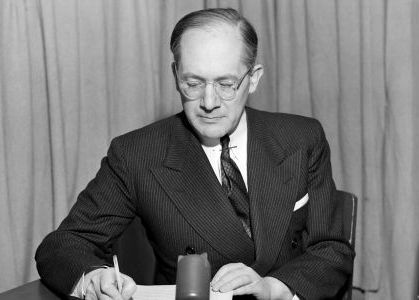
The Armenian Genocide Museum-Institute announces 2014 LEMKIN SCHOLARSHIP program for foreign students and PhD candidates. Raphael Lemkin scholarship is intended to enable foreign students, who specialize in genocide studies, especially in the Armenian Genocide, to visit Armenia for a month to conduct research in local scientific institutions and libraries.
The Armenian Genocide Museum-Institute will provide researchers possibility to carry out their research in AGMI, including necessary research materials and consultation.
The deadline for application is on 15 December, 2013. The winner will be selected by the Scientific Council of the AGMI on 25 December, 2013.
The beginning of the scholarship program is on 1 January, 2014. Winners are free to select a month within 2014 except January, February and December.The duration of the scholarship is one month. Winner of the Scholarship will provide article for International Journal of Armenian Genocide Studies as a result of his/her research within 6 months from the end of visit to Armenia.
The AGMI will cover all travel and accommodation expenses related to the nominee. A separate funding will be provided to cover some per diem and research expanses.
The Presentation of a New Book by Dr. Hayk Demoyan, Director of AGMI was held in MFA
17.10.2013
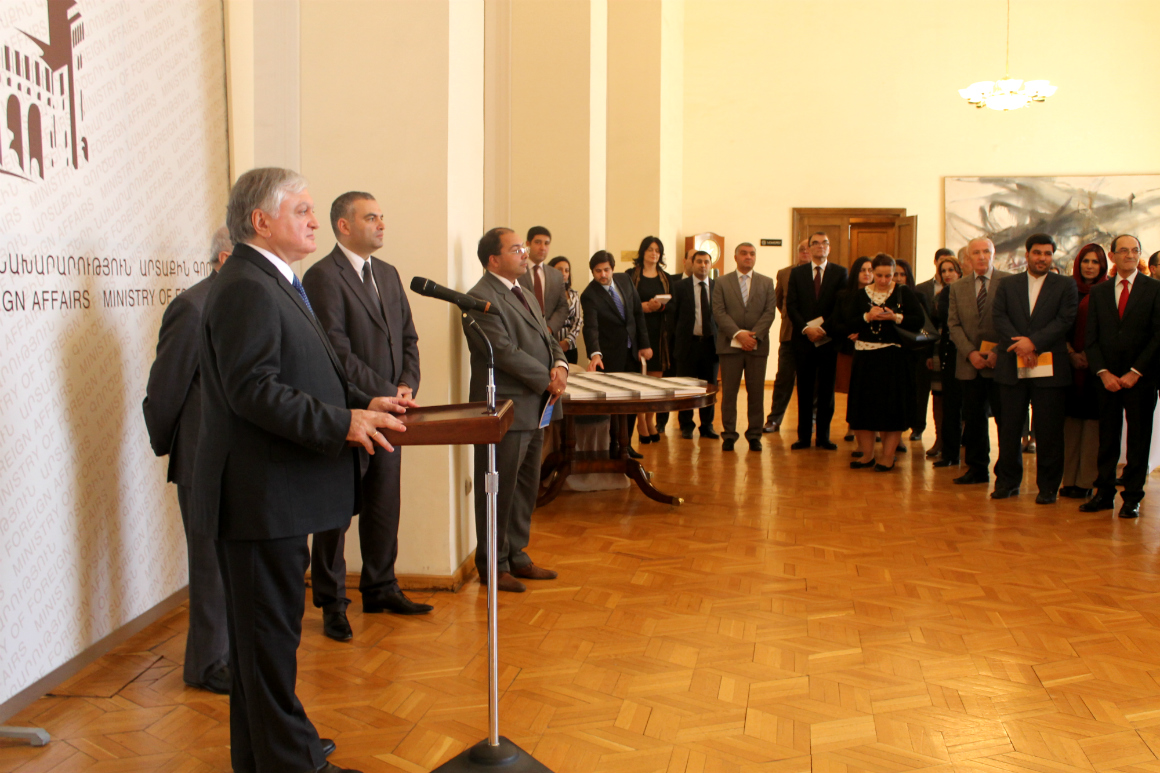 Today the presentation of a new book "Turkey's foreign policy and the conflict of Nagorno-Karabakh" by Dr. Hayk Demoyan, director of Armenian Genocide Museum-Institute, took place in the Ministry of Foreign Affairs. It was attended by foreign ambassadors and representatives of scientific and research circles.
Today the presentation of a new book "Turkey's foreign policy and the conflict of Nagorno-Karabakh" by Dr. Hayk Demoyan, director of Armenian Genocide Museum-Institute, took place in the Ministry of Foreign Affairs. It was attended by foreign ambassadors and representatives of scientific and research circles.
Edward Nalbandyan, Minister of Foreign Affairs, delivered a welcome speech. Congratulating the author, the minister said: “I have read this new monograph of significant scientific value with big interest, and I am sure that it deserves the attention of not only historians, experts, diplomats, researchers interested in our region, but also the wide range of readers.”
Nikolay Hovhannisyan, Professor of historical sciences, corresponding member of the Academy of Sciences and Arsen Avagyan, Head of the Neighbouring Countries Department of the MFA RA , Professor, and Doctor of Historical Sciences talked about the scientific value of the book. Nikolay Hovhannisyan stressed the value the work has among studies on Nagorno-Karabakh. Arsen Avagyan talked about the scientific and practical importance of the work.
Erebuni-Yerevan festival guests visited the Armenian Genocide Museum-Institute
11.10.2013
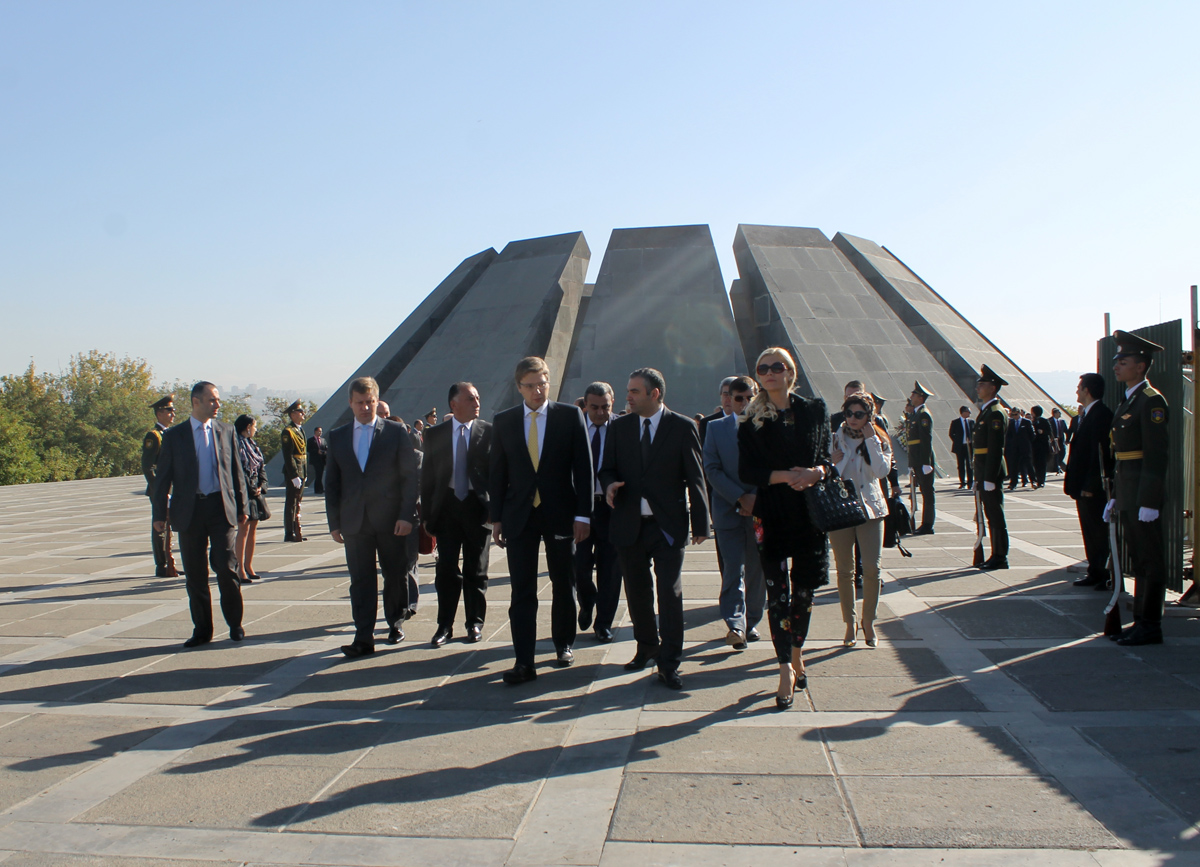 The Armenian Genocide Museum-Institute presented to Erebuni-Yerevan festival guests from all over the world exclusive exhibits, which signify the donations that were made in different countries in favor of the Armenians in the years of Genocide.
The Armenian Genocide Museum-Institute presented to Erebuni-Yerevan festival guests from all over the world exclusive exhibits, which signify the donations that were made in different countries in favor of the Armenians in the years of Genocide.
Members of delegations from all over the world, who arrived in Yerevan, with the invitation of the town hall of Yerevan to participate Erebuni-Yerevan festival, visited the memorial of the Armenian Genocide victims, Tsitsernakabert.
The visitors laid flowers at the eternal fire of the Genocide victims with a minute of silence in remembrance of the innocent victims.
Members of delegations from different countries visited the Armenian Genocide Museum & Institute with Museum Director Dr. Hayk Demoyan. The guests got acquainted with the exposition, as well as the temporary special exhibition, which was organized for the day.
The first issue of “Journal of Genocide Studies” has been published
05.10.2013
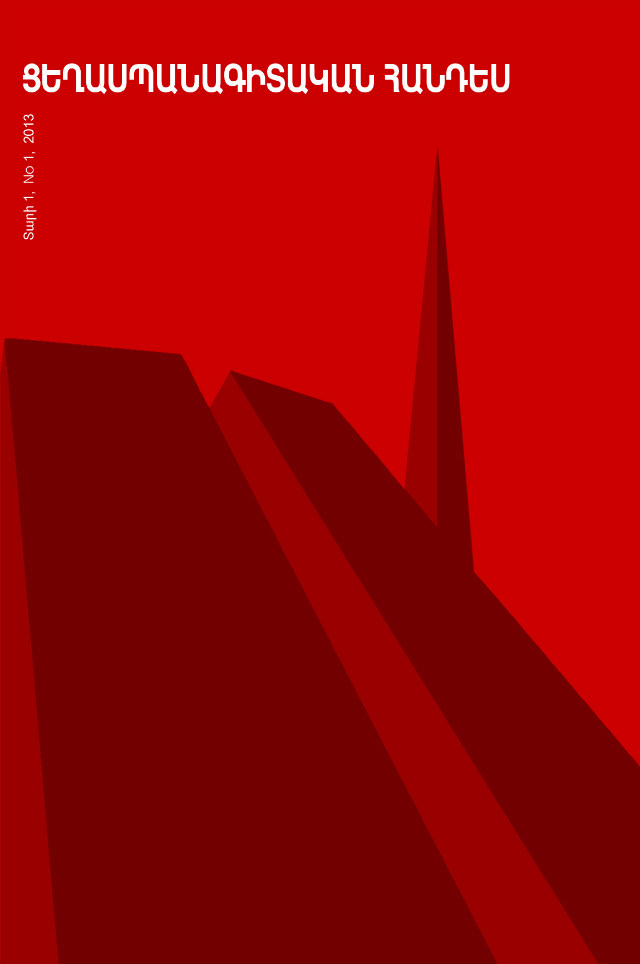
The Armenian Genocide Museum–Institute has started to publish “Journal of Genocide Studies”. The journal will include topics and articles related to the history of the Armenian genocide, as well as full and comprehensive research on the problems and the aspects which are related to this topic.
The first volume contains the materials of the International Conference which was held in Yerevan 2009, and was dedicated to the centennial anniversary of the Adana massacres 1909. Many scholars from Armenia, France, USA, Hungary and Austria were participated the Conference by reports and talks.
The journal will be convenient platform for scientific debates, opening new horizons for future studies.
However, the journal would not only be limited by the issues related to the Armenian Genocide, but also will be interested in other genocides, especially highlighting comparative studies.
Armenian Genocide Museum-Institute and the Russian «Holocaust» Center signed an memorandum of cooperation
25.09.2013
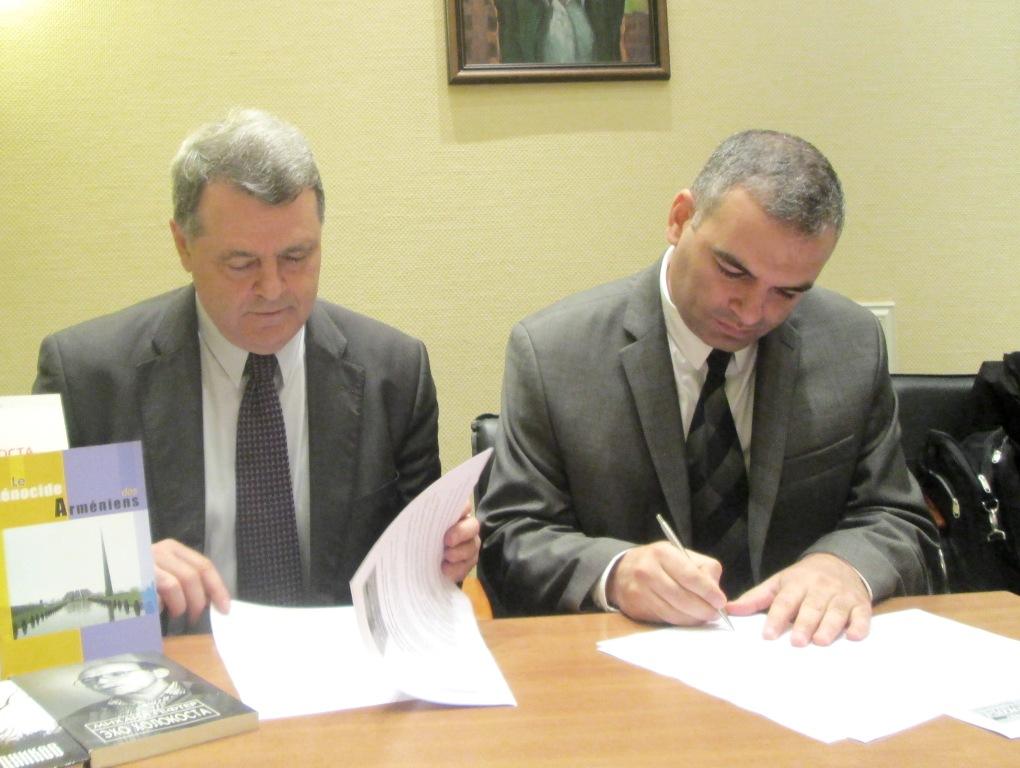
Armenian Genocide Museum-Institute and the Russian Holocaust Center signed an agreement on cooperation at September 19. The document was signed by co-chair of the Center "Holocaust" Ilya Altman and director of the Armenian Genocide Museum Hayk Demoyan. Signing ceremony took place at the Holocaust museum on «Poklonnaya Gora» in Moscow.
In the framework of memorandum parties plan a joint organization of temporary exhibitions and the development of cultural exchanges, sharing of knowledge and experience in the study of the Armenian Genocide and the Holocaust, including the exchange of scholars between the collaborating organizations, the interaction in the organization of education for the prevention of xenophobia, racism and other violations of human rights in the national and global contexts.
During the visit, the delegation of the Armenian Genocide Museum-Institute in Moscow also held meetings and talks with the leaders of the AGMI with the president of the Russian Jewish Congress Yuri Kanner and president of the "Holocaust" Foundation Alla Gerber.
Russian Research and Educational Holocaust Center was registered in June 1992. It is the first organizations in the post-Soviet era aimed at preserving the memory of Holocaust victims. Holocaust Center has offices in 40 regions of the Russian Federation.
The ceremony of cancellation of postage stamps dedicated to the 100th anniversary of the Armenian Genocide at AGMI
24.09.2013
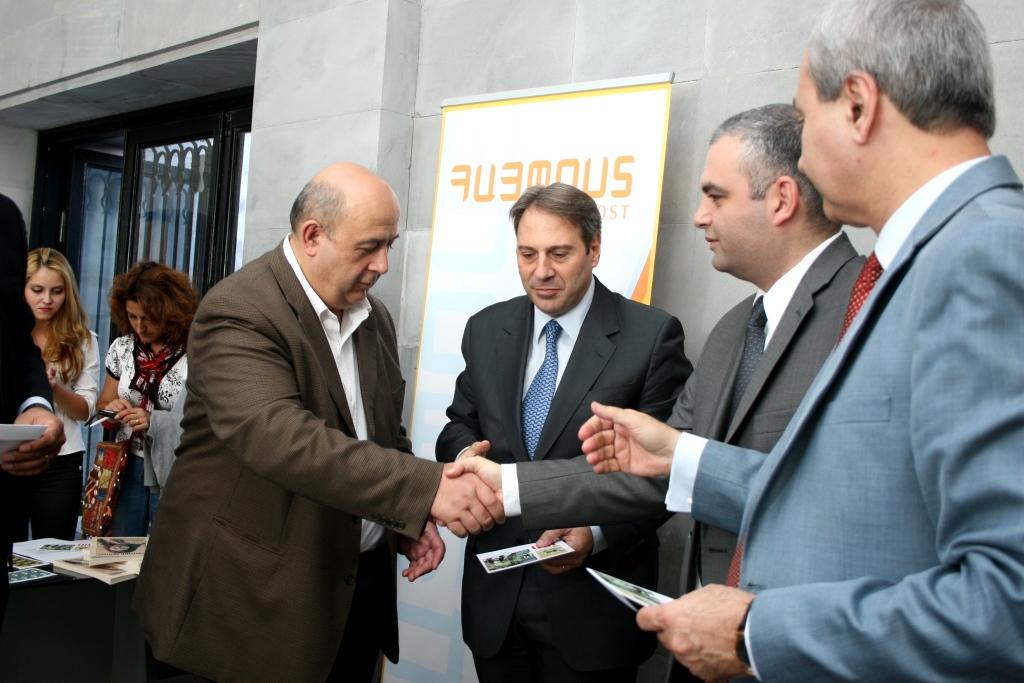
The ceremony of postage stamps cancellation, dedicated to the 100th anniversary of the Armenian Genocide took place on September 24 at the Museum-Institute of Armenian Genocide.
This year "HayPost" (Post of Armenia) has released three stamps dedicated to the German Protestant missionary and friend of the Armenian people Johannes Lepsius, British diplomat James Bryce and genocide survivor Aurora Mardiganian, who later played herself in the first feature film about Armenian Genocide "Ravished Armenia or Auction of Souls" in 1918. Silent film, produced in Hollywood, has been shown in many countries around the world for charity.
Event was attended by Deputy Minister of Transport and Communication Andranik Aleksanyan, chairman of the Union of Philatelists of Armenia Hovik Musaelyan, director of the Armenian Genocide Museum-Institute Hayk Demoyan, the representatives of "HayPost."
AGMI junior researcher Hasmik Grigoryan made a report on the topic “Children in the Armenian Genocide” in Vladikavkaz, Russia
06.09.2013
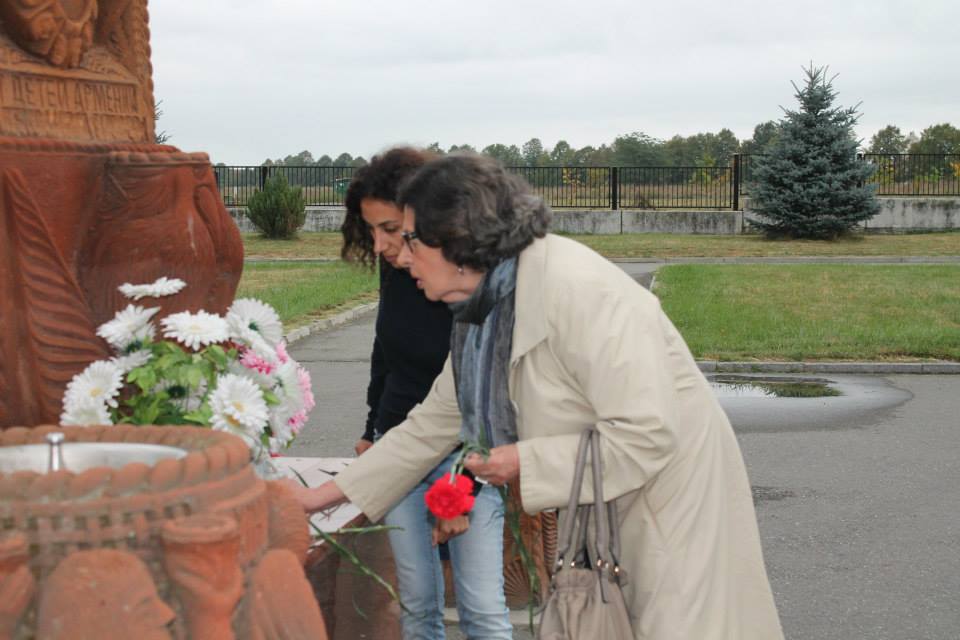
The first international conference “Children as victims of terrorism in modern history” devoted to the 9th anniversary of the victims of terroristic act in school #1 in Beslan, was held on September 1-3 in Vladikavkaz (Russia).
AGMI junior researcher Hasmik Grigoryan participated in the conference with a report on the topic “Children as victims of the Armenian Genocide”.
The co-president of the Center of Holocaust E. Altmann, a member of the Civic Chamber of the Russian Federation, president of “Holocaust” Fund Alla Gerber, Russian Federation pedagogues, a representative of Israel Cyril Fefermann (a member of the committee granting the title “Righteous Among the Nations”), a representative of France Simon Samuels (Director of international projects in S. Wiesenthal Center) also participated in the conference.
The participants of the conference also visited school #1 in Beslan where they had a meeting with the Mayor of Beslan and the members of the committee “Mothers of Beslan”. Afterwards participants paid tribute at the tombs of the victims of terrorism in cemetery “City of Angels” and put flowers on the monument “From children of Armenia”.
The conference was organized in cooperation of Russian Jewish Congress, “Holocaust” Center and Fund, the government of the Republic of North Ossetia-Alania, North Ossetian State University after K. L. Khetagurov, North Ossetian State Institute of qualification and professional preparation of educational workers, Academy of improvement of professional preparation and qualification.
AGMI researchers in Toronto
05.09.2013

AGMI researchers Lusine Abrahamyan, Edita Gzoyan and Khachatur Kobelyan participated in “Genocide and Human Rights University Program” (GHRUP) organized by Zoryan Institute, Toronto, Canada from August 5 to 16.
It is a two-week course during which prominent scholars and participants from all over the world present and discuss various topics on human rights, theories of genocide, Armenian Genocide, Holocaust, genocides in Cambodia, Rwanda and Darfur, genocide denial, psychological impact of genocide, as well as issues concerning genocide and international law, genocide prevention, etc.
On the last day of the program the participants made presentations. AGMI research fellow Lusine Abrahamyan’s presentation was about “The Armenian Genocide and the American Red Cross”. Edita Gzoyan, PhD spoke about the Genocide denial under the Public International Law and its implications on the Armenian Genocide case. PhD student in AGMI Kobelyan’s presentation was about the Defense of Van and its significance.
Famous French artist of Armenian descent Hovhannes Semerdjian (Jansem) passed away in the age of 93
28.08.2013
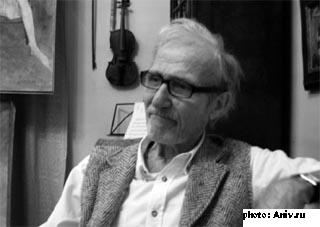
Famous French artist of Armenian descent Hovhannes Semerdjian (Jansem) passed away in the age of 93 on August 27 , 2013 in a Paris suburb. Jansem was one of the most outstanding figures in modern French art.
He visited Armenia for the first time in 1973. In 2001 Jansem again visited Armenia by the invitation of Kocharian the president of the Republic of Armenia. He donated his 34 canvases entitled “Genocide” to the Armenian Genocide Museum and Institute.
Armenian Genocide Museum and Institute expresses sincere condolences to the relatives and friends of Jansem.
Visit of the Participants of the AGAU Games to Armenian Genocide Memorial
01.08.2013
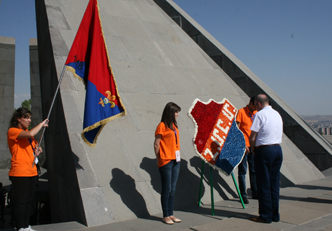
On August 1, 2013, the participants of the 9th Armenian General Athletic Union (Homenetmen) Games headed by the members of AGAU Central Board visited the Armenian Genocide Memorial. The members of AGAU Central Board laid a wreath at the memorial of the Armenian Genocide victims after which the 650 members of the delegation honored the memory of the innocent victims with a minute of silence. The delegation visited also the Armenian Genocide Museum, where a unique ceremony of signing and stamping the cards dedicated to the memory of Shavarsh Krissian, a famous athlete and martyr of the Armenian Genocide, took place. Hayk Demoyan, Director of the AGMI, presented to the guests the story of formation of the Armenian athletic clubs and soccer teams in the Ottoman Empire before 1915 demonstrated in a small exhibition called “Armenian Sport in Ottoman Empire” organized special for the young athletes of the AGAU, which included about 70 photos, documents, periodicals. At the end of the visit the members of the AGAU Central Board had a meeting with the director of the Armenian Genocide Museum-Institute.
Senior researcher of the AGMI participated at the Summer School on “International Criminal Law: from Theory to Practice” in the Hague
07.07.2013
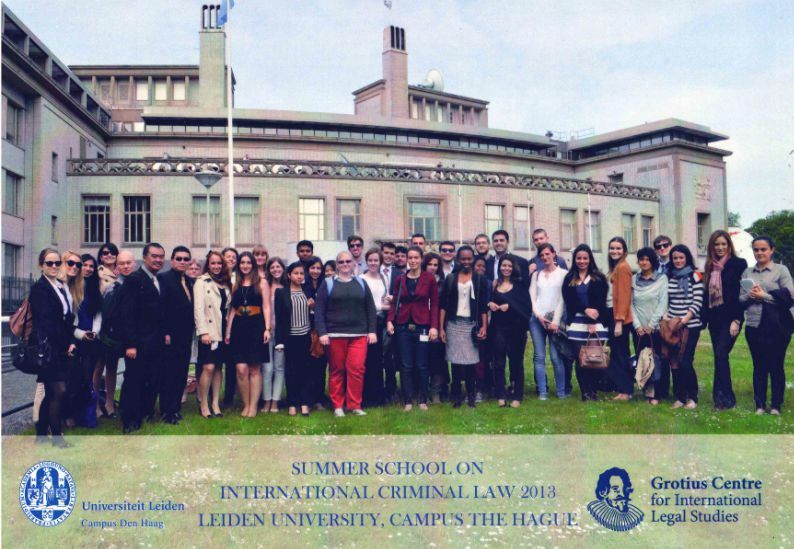
Senior researcher of the RA NAS The Armenian Genocide Museum-Institute Edita Gzoyan participated at the Summer School on “International Criminal Law: from Theory to Practice” held in the Hague organized by the Leiden University, June 23 – July 5, 2013. Within the framework of the school, developments in the International Criminal law were introduced, especially new approaches towards the amendment of the Conventions on Genocide and Crimes against Humanity.
Тhe participants visited International Criminal Court, International Criminal Tribunal for the former Yugoslavia, Special Tribunal for Lebanon.
Representatives of the AGMI at the 10th Conference of International Association of Genocide Scholars in Siena
23.06.2013
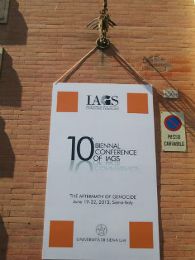
The conference of the International Association of Genocide Scholars took place on June 19-22 in Siena, Italy. More than 200 participants from different countries took part in the conference.
Hayk Demoyan, Suren Manukyan, Asya Darbinyan and Gevorg Vardanyan, representatives of the AGMI, also presented reports at the conference. In his report ''Making Genocide possible: the official rhetoric and anti-Armenian discourse in Azerbaijan'' Hayk Demoyan, Director of the AGMI, demonstrated the current official policy of anti-Armenian propaganda in Azerbaijan as an alarm of creating an atmosphere or prerequisites for a possible genocide.
Suren Manukyan reflected on issue of mass participation during the Armenian Genocide, Asya Darbinyan presented the humanitarian efforts of the American organizations for Armenians during the Genocide, and Gevorg Vardanyan demonstrated the assistance provided by Greeks for Armenians during the Genocide. In 2015 the annual conference of the International Association of Genocide Scholars will take place in Yerevan under the auspices of the AGMI within the framework of events dedicated to the Centenary of the Armenian Genocide.
PACE President visits Armenian Genocide Memorial
01.06.2013
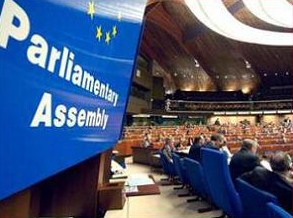
On June 1 the PACE President Jean-Claude Mignon, the PACE Vice President René Rouquet and the delegates of the Assembly accompanied by the PACE Honurable member, the NA Vice President Hermine Naghdalyan visited Tsitsernakaberd Memorial Complex. They laid a wreath at the Memorial of the 1915 Armenian Genocide victims and honored the memory of the innocent victims with a minute of silence. The guests have also been at the Armenian Genocide Museum-Institute and got acquainted with the documents witnessing the Genocide.
AGMI researcher Khachatur Kobelyan participated at International Conference in Riga
01.06.2013
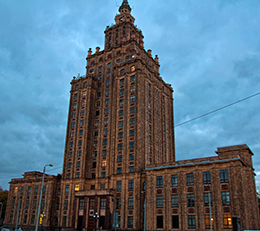
The 2nd International Conference – “Holocaust Museums and Memorial Places in Post-communist Countries: Challenges and Opportunities” ran from May 27 to 28 in Latvian Academy of Science, Riga, Latvia. The Conference was organized by Riga Ghetto and Latvian Holocaust Museum, Baltic International Tolerance Center and Society “Shamir”. The conference was attended by Jewish and foreign scholars from different countries, as well as young researchers. During the Conference opening the Ambassadors and diplomatic representatives of USA, Russia, Germany, Belarus, Israel and other countries in Latvia had speeches.
Khachatur Kobelyan, researcher from Armenian Genocide Museum-Institute, took part in this Conference. The topic of presentation was “Two approaches of preservation and dissemination of the Genocide memory”. The participation of young researcher of the Institute in this program became possible by Shapou and Hopy Kibarians sponsorship.
AGMI researchers participated in International conference in Chicago
15.05.2013
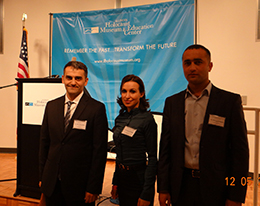
International conference dedicated to Genocides of Armenian, Greek and Assyrian people took place May 10-11, 2013 at Chicago, US. Conference was hosted by Armenian National Committee, Assyrian Center for Genocide Studies and Asia Minor and Pontos Hellenic Research Center and was hold at Illinois Holocaust Museum and Educational Center.
It was the first International Academic Conference on The Ottoman Turkish Genocides of the Armenians, Assyrians and Greeks in Ottoman Empire. Talks of participants focused on history of Genocide, memory, comparative genocide studies, gender perspectives, international law, social-psychological aspect etc.
Armenian Genocide Museum-Institute was represented on this prestigious event with such prominent research centers as Zoryan Institute, Clark University, Universities of Florida and New Orlean, the Royal College of London, etc..
Report of Suren Manukyan (PhD, the deputy director of the Armenian Genocide Museum-Institute) was devoted to the psychosocial aspects of the Armenian Genocide, senior researcher of the museum Tehmine Martoyan (PhD) presented international legal qualification and responsibility issue of the Smyrna Catastrophe and senior researcher George Vardanyan (PhD) talked about the comparative study of the Armenian and Greek genocides.
This prominent event was an important contribution to developing of new approaches to the study of Genocides of Armenians, Greeks and Assyrians, as well as the in process of recognition and condemnation of the crime.
President of Belarus Alexander Lukashenko Visited Tsitsernakaberd
15.05.2013
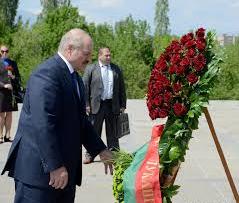
President of Belarus Alexander Lukashenko visited Tsitsernakaberd Memorial Complex within the framework of his official visit to the Republic of Armenia
President of Belarus laid a wreath at the memorial of the Armenian Genocide victims after which the members of the delegation put flowers at the Eternal Fire and honored the memory of the innocent victims with a minute of silence.
Alexander Lukashenko had a tour of the Memorial Alley where he watered the fir which was planted in 2001.
Igor Lukšič, Deputy Prime Minister of Montenegro Paid Tribute to the Memory of the Innocent Victims of the Armenian Genocide
07.05.2013
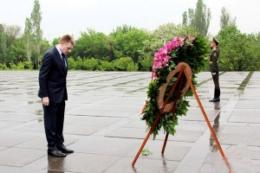
Deputy Prime Minister, the Minister of Foreign Affairs and European Integration of Montenegro Igor Lukšič, who arrived in Armenian from May 6 to 7 at the invitation of the Minister of Foreign Affairs of RA Eduard Nalbandyan, visited Tsitsernakaberd Memorial Complex.
Deputy Prime Minister of Montenegro and his accompanying delegation also visited Armenian Genocide Museum, took a guided tour of the museum and got acquainted with the archive documents and photos concerning the Armenian Genocide.
Igor Lukšič left a note in the Commemoration Book.
Yerevan State University in cooperation with the Armenian Genocide Institute-Museum launches the new master program of “Genocide Studies”
06.05.2013
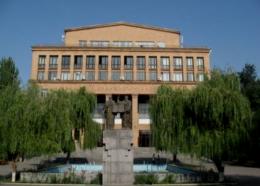
The qualified specialists in the Genocide Studies are largely required. And to 2015 as the 100th anniversary of the Armenian Genocide this issue becomes more vital.
For achievement of these goals Yerevan State University in cooperation with the Armenian Genocide Institute-Museum launched the new master program of “Genocide Studies”.
The master program will operate in the framework of YSU Institute for Armenian Studies. The focus will be made on the Genocide historiography, social and psychological aspects, international law issues, international relations, cultural studies, linguistic aspects, etc.
The lectures will be provided by the leading academicians. Foreign specialists will be involved in the tutoring process.
The admission will start in May. The program is open to the students of YSU, other univerities of Armenia and Artsakh.
For more information write to the email address masters@armin.am
A Ceremony of Tribute at Tsitsernakaberd Memorial Complex
24.04.2013
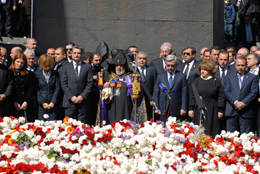
Today is the Remembrance Day of the Armenian Genocide victims. Every year on April 24 hundreds of thousands of Armenians from Armenia, Diaspora as also numerous foreigners march to Tsitsernakaberd Memorial Complex to put flowers at the eternal fire and pay tribute to memory of the innocent victims of the Armenian Genocide.
President of Republic of Armenia Serzh Sargsyan, Catholicos of all Armenians His Holiness Garegin II and Prime Minister Tigran Sargsyan accompanied by the members of parliament and government visited Tsitsernakaberd. They honored the memory of innocent victims, after which His Holiness Karekin II, Catholicos of All Armenians prayed for the repose of the victims’ souls.
Senior officers of the armed forces, political figures, intellectuals, and heads of the diplomatic missions accredited to Armenia, as well as members of patriotic unions and social organizations also paid tribute to memory of the innocent victims of the Armenian Genocide.
The dens flow to Tsitsernakaberd continues.
Hayk Demoyan’s Annual Press Conference Took Place in Museum-Institute
23.04.2013
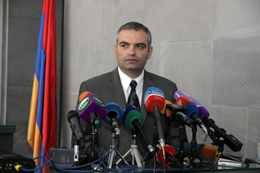
The annual press conference by Hayk Demoyan, the director of the Armenian Genocide Museum-Institute, took place in the hall of Institute. During the press conference Hayk Demoyan presented previous year’s main achievements of the Armenian Genocide Museum-Institute. The main emphasis was made upon the extensive construction that began in 2012, on the new museum exhibition, as well as on the series of events still in progress.
“The main exhibition area will be increased by 2.5 times. These are not mere numbers; they assume long and hard work, as we are organizing the exhibition basing on absolutely new concept. A new museum culture will be introduced in Armenia” mentioned Demoyan. In his word the new exhibition will be equipped with latest technologies.
Hayk Demoyan underlined the following main directions in referring to AGMI’s 2012-2013 activity.
• Events being organized on the eve of 100th anniversary of the Armenian Genocide
• International cooperation between museums
The Armenian Genocide Museum-Institute continues to carry out its main mission simultaneous to various and geographically extensive work implemented on the occasion of the 100th anniversary of the Armenian Genocide. The history of the Armenian Genocide will be presented to foreign and Armenian public through permanent and temporary exhibitions, as well as scientific researches on the problems of the Armenian Genocide. The main objectives of the Museum-Institute are the organization of the collective materials on literature, photographs, documents, as well as other archives concerning the life of Western Armenians in the Ottoman Empire and the research on history of the Armenian Genocide. The library and archives of the Museum-Institute have recently been replenished with valuable and exclusive collections especially during last years.
Presentation of Books held at the Armenian Genocide Museum-Institute
23.04.2013
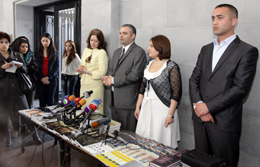
Today, at 12:30, the presentation of the books published by the Armenian Genocide Museum-Institute during the last five years took place in the hall of the Institute. During this event, over twenty-five volumes, issued within different series, were presented.
The Armenian Genocide Museum-Institute carries out its publishing activities within the series of "Diplomatic Papers," "The Survivor’s Memoirs", "Eyewitness Testimonies," etc.
The presented volumes include both republished and translated original literature and the monographs of the AGMI researchers.
The director of the Armenian Genocide Museum-Institute Hayk Demoyan noted in his speech that the publishing of books is the most important part of AGMI’s strategy.
One of the researchers of the Armenian Genocide Museum-Institute Gevorg Vardanyan (PHD) and Meline Anumyan (PHD) presented their monographs.
World renowned genocide expert Dr. Israel W. Charny donates his personal library to Armenian Genocide Museum & Institute
22.04.2013
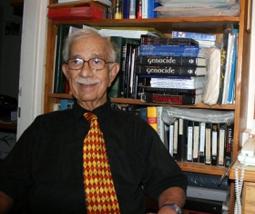
Israel Charny, renowned genocide expert of Jewish origin, the editor in chief of Encyclopedia of Genocide, donated his personal library to Armenian Genocide Museum & Institute. The library includes over 700 volumes on Genocide studies - theoretical literature, books concerning the Jewish Holocaust and the Armenian Genocide.
This rich collection will be placed in the new library building of the Armenian Genocide Museum & Institute. The AGMI intends to open a separate hall named after Israel Charny.
This is the largest donation to the AGMI library in the course of the past five years. It will provide an opportunity to conduct research work in the field of comparative genocide studies.
AGMI has recently published the volume “From Dardanelles to Palestine” by Sargis Torosian, memoirs of an exceptional significance.
20.04.2013
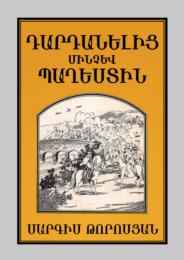
Memoirs of Sargis Torosian represent the odyssey of an Armenian officer in Ottoman army during WWI. The unexpected characters and developments, the representation of the history of genocide from an unforeseen point of view make the memoirs of Sargis Torosian extremely interesting and engaging. And the memoirs leave the readers with an unforgettable impression.
The main character didn't suffer the Genocide; however he became a victim of the Armenian Genocide, one of the biggest crimes of the 20th century, organized by the Ottoman government.
The unique memoirs of Sargis Torosian with their unprecedented content tell us a life story of an Armenian military officer who provided an outstanding service to Ottoman Turkey by his duty. The memoirs demonstrate heroism and self-sacrifice, betrayal and conspiracy, love and pain of loss…
Memoirs of Sargis Torosian have recently been published also in Turkish. The volume aroused significant interest among the Turkish people and became a subject to various interpretations and disputes.
The volume is the first Armenian translation of the memoirs to be published. It consists of 17 chapters.
An Exhibition Dedicated to the 80th Anniversary of Franz Werfel’s “The 40 Days of Musa Dagh” opened at the National Library
17.04.2013
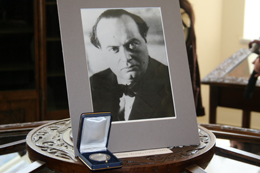
An exhibition dedicated to the 80th anniversary of the first publication of the famous novel “The 40 Days of Musa Dagh” by Franz Werfel opened today in cooperation with the Armenian Genocide Museum-Institute and RA National Library.
Hayk Demoyan, the director of the Armenian Genocide Museum-Institute and Tigran Zargaryan, the director of RA National Library had opening speeches. Hayk Demoyan handed a golden medal issued under the “Gratitude” nomination to the National Library.
The historical novel “The 40 Days of Musa Dagh” describes one of the heroic episodes of the Cilician Armenians’ struggle during the Armenian Genocide. Thanks to this struggle and French warships, more than four thousand people were miraculously saved from the impending extermination. This novel is justly considered a monumental work the contents of which fully represent the Armenians’ struggle for self-preservation and the horrors of the Armenian Genocide in the frame of fiction.
The exhibition which was presented in the National Library includes more than fifty publications of the novel which were published in different years and in different languages and are part of the collections of the Armenian Genocide Museum-Institute and National Library.
The exhibition will be open until April 25.
The Armenian Genocide Museum-Institute Published the Monograph “Recognition and Condemnation: Young Turks Trials (1919-1921 and 1926) by Meline Anumyan
16.04.2013
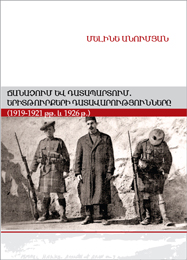
The Armenian Genocide Museum-Institute published Meline Anumyan’s (PHD) monograph “Recognition and Condemnation: Young Turks Trials (1919-1921 and 1926). The work is dedicated to the study of the lawsuits issued over the massacres and deportations of the Armenians in Military Tribunals of the Ottoman Empire during 1919-1921 and the trials of the Young Turks held in the Independent courts of the Turkish Republic in 1926.
The political atmosphere in Turkey after the establishment of Mudros armistice, as well as the discussions on Armenian deportations and massacres that emerged in Ottoman press and in two-chamber parliament at the end of 1918 are presented in the first chapter of current monograph . The author also refers to the investigations launched during this period in Turkey against those, responsible for the Armenian genocide.
The cases on Armenians deportations and massacres of 1919-1921 filed in the Military Tribunals of Istanbul and trials of the Young Turks during 1919-1920 are studied in the second chapter.
The political developments in Turkey during 1923-1926 are discussed in the third chapter. The author presents Young Turks’ reasons for appearing in the frontlines of opposition after the proclamation of the Turkish Republic, as well as the planned assassination attempt in Izmir against Mustafa Kemal, President of the Turkish Republic. Young Turks had a significant role in the nationalistic struggle. The third chapter is also dedicated to the study of the case filed over the assassination attempt in Izmir and the one known as Ankara or “Black Band” case. Both cases were heard in Independent courts of the Turkish Republic. At the end of the chapter author makes comparison between Young Turks trials of 1919-1921 and 1926, and emphasizes the fact of preserving Ittihad tradition within the ideology and state governance in the political life of the Turkish Republic.
Armenian Genocide Exhibit Will be Included in Canadian Museum for Human Rights
14.03.2013
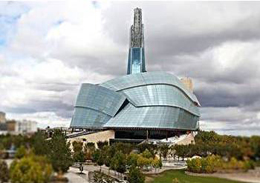
WINNIPEG — Calling the killing of Armenians by Ottoman Turks a genocide may hurt lucrative trade between Canada and Turkey but the Canadian Museum for Human Rights is not about to call the slaughter of an estimated 1.5 million people anything other than genocide, the Winnipeg Free Press writes.
When the museum opens in Winnipeg next year, information about the Armenian genocide will be included in its galleries, and it will be called “genocide,” the museum’s head of stakeholder relations said Sunday.
Clint Curle was responding to reports that Turkish Ambassador Tuncay Babali said the Harper government’s decision to brand the First World War-era killing of Armenians as genocide may be hindering a potentially lucrative trading relationship with Turkey.
Deputy Prime Minister of Czech: “Armenian Genocide is the History of All Humanity”
11.04.2013
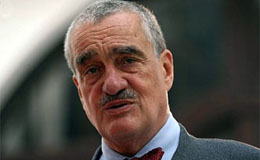
The delegation headed by the first Deputy Prime Minister and Minister of Foreign Affairs of the Czech Republic Karel Schwarzenberg visited Tsitsernakaberd Memorial Complex today in the morning. The high-ranking official from the Czech Republic laid a wreath and flowers at the Memorial of the Armenian Genocide victims and honored the memory of the innocent victims with a minute of silence.
Karel Schwarzenberg, accompanied by the director of the Armenian Genocide Museum-Institute Hayk Demoyan, visited the Armenian Genocide Museum and got acquainted with the exhibition items of the museum. Deputy Prime Minister of Czech left following note in the Commemoration Book: “The centenary of all those horrors will be soon. This is not only your history, but the history of the whole humanity. These photos tell us the terrible truth about what a human being can do.”
Afterwards the first Deputy Prime Minister of Czech had a tour of the Memorial Alley and watered the fir which he planted in 2008.
The Deputy Prime Minister of Slovakia Miroslav Lajčák Visited Tsitsernakaberd Memorial Complex
10.04.2013
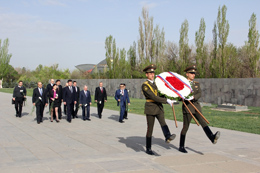
The Deputy Prime Minister and the Minister of Foreign Affairs of Slovakia Miroslav Lajčák, who is in Armenia on an official visit, visited Tsitsernakaberd Memorial Complex and put flowers at the Memorial of the Armenian Genocide victims.
Miroslav Lajčák and his accompanying delegation visited the Armenian Genocide Museum and got acquainted with the archive documents and photos concerning the Armenian Genocide, the first genocide of the 20th Century.
The Deputy Prime Minister of Slovakia left a note in the Commemoration Book.
It should be noted, that the National Assembly of Slovakia recognized the Armenian Genocide on November 30, 2004.
On the Occasion of the 125th Birth Anniversary of Hedvig Büll
“My Heart is Armenian”
04.03.2013
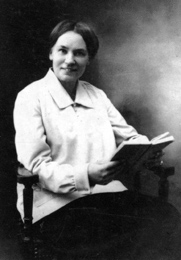
Hedvig Büll was born in the small city of Haapsalu in Estonia, in 1887. Being the daughter of a prosperous family, Hedvig Büll got a good education (higher pedagogical education in Saint Petersburg and missionary education in Germany). She knew her mother tongue Estonian, as well as Russian, French, English, German and also learnt Armenian and Turkish while she was in Cilicia within her missionary activities.
In 1909 Hedvig Büll learnt about the Armenian massacres in Adana from the front pages of the European media and made a fateful decision to leave for a remote country to take part in the saving work of the Christian children who had become orphans as a result of the massacres. In 1911 she arrived in Cilicia and began working as a teacher in the “Beytel” Orphanage of Marash founded by the German Evangelical missionaries for the Armenian parentless children. After working there for four years, in 1915 she became witness to the Armenian massacres carried out by the Young Turk authorities. From 1916 until 1919, Hedvig Büll worked at the German orphanage of Harunie Village (south of Marash), which belonged to the same mission. In 1918 thanks to her superhuman efforts, the young missionary, Hedvig Büll, was able to rescue the children of the orphanage from the Turkish exile and impending disaster. In 1919 taking into account the political situation of Cilicia, Hedvig Büll had to leave for Estonia, but her separation from her favorite Armenian nation did not last long.
California Lectures of Suren Manukyan under the Fulbright Occasional Lectures Fund
02.04.2013
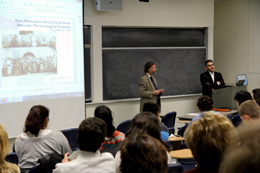
On February 11, 2013 Deputy Director of Armenian Genocide Museum and Institute and Fulbright Visiting Scholar at Center for the Study of Genocide, Conflict Resolution, and Human Rights of Rutgers University of New Jersey Suren Manukyan within the framework of the Fulbright Occasional Lectures Fund had a presentation “Mass Participation During the Armenian Genocide: The Sociological Dimension”, hosted by the UCLA Program in Armenian Language and Culture. Manukyan shared ideas and findings of his study with the audience of UCLA students, faculty and members of Armenian community. He focused on need of shift the research of Armenian Genocide from abstractions and impersonal structures to actors. The question “Who were involved and implemented Armenian Genocide?” was discussed. The prominent scholars of Armenian Studies such as Richard Hovhannisian, Sebouh Aslanian, Roubina Peroomian, Peter Cowe as well as students of UCLA attended the lecture.
On Feb 13 Dr.Manukyan had a community meeting in Fresno and presentation “The Perpetrators and Victims during the Armenian Genocide. Socio-Psychological Dimension”. Students, Faculty of CSU-Fresno and members of Armenian community of Fresno attended the lecture. The interesting discussion initiated after the presentation. Professors Barlow Der Mugrdechian, Sergio La Porta, Sona Haroutyunian were among the audience.
On February 14 Suren Manukyan spoke during the class of Armenian History at CSU-Fresno. The main topic was the Structure of perpetrator hierarchy during the Armenian Genocide. The talk was hosted by the Armenian Studies Program and the Center for Armenian Studies at Fresno State. Students were also interested in activities and plans of AGMI-Armenian Genocide Museum and Institute.
Maria Jacobsen 130
29.03.2013
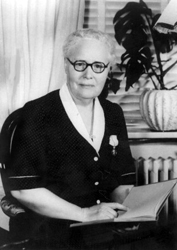
Maria Jacobsen was born in Siim, a small city in Denmark, on November 6, 1882. She was very young when she learnt about the Hamidian massacres (1894-1896) and sufferings of the Armenian people in the Ottoman Empire from the articles published in Danish media.
The members of the phil-Armenian movement, that began in 1890s in the Scandinavian countries and particularly in Denmark, had various enterprises and made speeches condemning the Hamidian massacres. The Danish branch of the "Women’s Missionary Workers" (K.M.A.) Organization was established in Denmark in 1900: it supported Armenian orphans sheltered in German orphanages of Mush, Van, Marash and Kharberd. In 1906 after completing nursing courses, Maria Jacobsen became a member of the "Women’s Missionary Workers" Organization and left for Kharberd as a missionary to help suffering Armenian people. In November 1907 the young missionary arrived in Kharberd where she was appointed as a director at a small hospital. In a short period she learnt Armenian in order to communicate with local people. At the same time she began writing her diary, which later became a valuable eyewitness testimony of the Armenian Genocide. Maria Jacobsen left her first record in the diary on September 7, 1907, and the last one was dated August 6, 1919. The voluminous diary which has 600 pages mainly presents the deportation and exile of the Armenians of Kharberd and scenes of murders ferociously perpetrated by the Turks from 1915 to 1919. For a long time the Danish missionary who was an eyewitness to the Armenian Genocide kept her diary in a secret as she had taken it out of the Ottoman Empire endangering her life. Maria Jacobsen’s diary was translated into Armenian and after her death it was published in Beirut in 1979.
The International Conference “Armenian Genocide: Challenges on the Eve of Centenary” Continues
23.03.2013
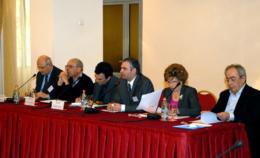
On March 23, the international conference on the eve of centenary of the Armenian Genocide, organized by the State Commission on Coordination of the events dedicated to the 100th anniversary of the Armenian Genocide resumed.
The prominent foreign and the Armenian researchers participated in this international conference. The junior researchers of the Armenian Genocide Museum-Institute also reported during the third sitting of the conference.
Productive discussion and exchange of ideas took place at the end of the conference. It should be noted that, this international conference on the eve of centenary of the Armenian Genocide, organized by the State Commission on Coordination of the events dedicated to the 100th anniversary of the Armenian Genocide aims to start discussions and make conclusions in three main directions:
a. Further perspectives and directions of the Armenian Genocide studies and organization of museum exhibitions,
b. Imperatives and efficient methods of the fight against the denial,
c. Discussion of compensation for the successors of the Armenian Genocide survivors and victims, and issues related to its legal justification.
Press release
Armenian Genocide: Challenges on the Eve of Centenary
International Conference
21.03.2013
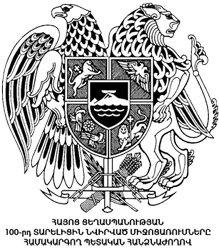
The international conference on the eve of centenary of the Armenian Genocide, organized by the State Commission on Coordination of the events dedicated to the 100th anniversary of the Armenian Genocide aims to start discussions and make conclusions in three main directions:
a. Further perspectives and directions of the Armenian Genocide studies and organization of museum exhibitions,
b. Imperatives and efficient methods of the fight against the denial,
c. Discussion of compensation for the successors of the Armenian Genocide survivors and victims, and issues related to its legal justification.
The conference will be an important harbor for efficient scholarly discussions and necessary conclusions concerning the centenary of the Armenian Genocide, for clear conclusions and recommendations in terms of the scholarly work on not yet observed or less explored issues as well as the potential support for it.
This conference will also allow developing more efficient mechanisms and methods of response to the Turkish denial. Finally, this conference is designed to develop and plan the overall strategy of various events to be organized in the Republic of Armenia and abroad on the occasion of centenary based on the professional and reputable opinion.
The conference is an opportunity to clarify the issue of elimination of consequences of the Armenian Genocide and to develop the further strategy.
The organization of such a conference, in which experts on Armenian Genocide studies take part, will be an important review on the eve of Yerevan conference of International Association of Genocide Scholars in 2015. It will also promote the generation change of Armenian Genocide scholars.
AGMI has recently published Tigran Kalaydjian’s work “Sentinel of Truth: Gourgen Yanikian and the struggle against the denial of the Armenian Genocide”.
19.03.2013
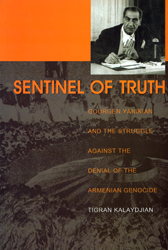
Sentinel of Truth provides a detailed account of the assassination of two Turkish diplomats in California in 1973 by an aggrieved septuagenarian survivor of the Armenian Genocide, and explains how a study of the global campaign against Turkey’s denial of the genocide cannot but include the killings carried out by Gourgen Yanikian.
By describing at length the effects these and subsequent acts of militancy had on the consciousness of diasporan Armenians, Tigran Kalaydjian sheds new light on the activities of the tightly-knit group of people that is spearheading the drive for a comprehensive redress of the human rights disaster of 1915 and elucidates the many facets of the Diaspora’s decades-long struggle for justice.
The author, who lives in Cyprus, is a graduate of the London School of Economics & Political Science, and this book is his first work on the subject of the Armenian Genocide and Turkey’s policy of denial.
Göran Gunner: “Genocide of Armenians Through the Swedish Eyes”
16.03.2013
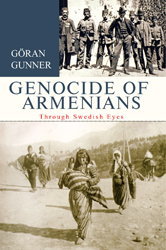
The Armenian Genocide Museum-Institute has recently published the volume “Genocide of Armenians Through the Swedish Eyes” by Göran Gunner.
The book consists of an introduction and 9 chapters. In separate chapters Gunner represents the Hamidian massacres, the Armenian Genocide, planned and implemented by the regime of Young Turks, and the massacres of the Armenians carried out by Kemalists in 1919-1922. The author depicts the Armenian Genocide as the first genocide of the 20th century. The volume is valuable as the author uses a number of reports of Swedish diplomats, eyewitness accounts and press reports. In Chapter 9 Gunner demonstrates the parliamentary debates on the recognition issue of the Armenian Genocide and the position of the Swedish society on this issue.
The volume was first published in Swedish in Sweden, in 2012.
Göran Gunner works at Church of Sweden research department and is an associate professor at Uppsala University.
He has a number of publications on freedom of religion and human rights in Swedish.
The monograph by Gevorg Vardanyan “The Greek Population in the Ottoman Empire and the Asia Minor Disaster (1914 - 1923)” has been published by AGMI
15.03.2013
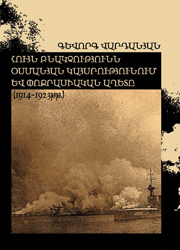
The Armenian Genocide Museum-Institute has published the book by Gevorg Vardanyan (PhD in History) “The Greek Population in the Ottoman Empire and the Asia Minor Disaster (1914 - 1923)”.
This monograph represents the situation of the Greek population in the Ottoman Empire and the Greek Genocide from 1914 to 1923.
The first chapter represents the Greek population distribution in the Ottoman Empire on the eve of the World War I. There is a separate analysis on the legal status of the Greek people from 1908 to 1914.
The second chapter studies the mass deportations and massacres of the Greeks during World War I and during the Greco-Turkish war of 1919-1922 in Eastern Thrace, Eastern Asia Minor, Pontus and in other regions of the Ottoman Empire. The illustration of the Greco-Armenian cooperation in the first quarter of the 20th century is presented in this chapter as well.
The third chapter examines the details of the Lausanne Conference concerning the Greek issue. The parallels between the causes and the mechanisms for the accomplishment of two cases of Genocides (Armenian and Greek) are carried out.
James Bryce-175
10.03.2013
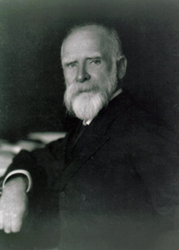
James Bryce, one of the most significant activists of phil-Armenian movement, a jurist and a historian, was born on May 10, 1838, in Belfast, Northern Ireland. He studied at the University of Glasgow and Trinity College, Oxford. Later James Bryce held responsible positions in British cabinet - Under-Secretary of State for Foreign Affairs, President of the Board of Trade, and Chief Secretary for Ireland. Bryce was the Ambassador of Great Britain in the USA in 1907-1913.
The first visit of Bryce to Historical Armenia was in 1876 to climb the peak of Biblical Mount Ararat, after which he published the book “Transcaucasia and Ararat” (London, 1877). It’s a narrative of travel notes with several political observations and conclusions. In 1878 , after his voyage to Armenia, James Bryce established the “Anglo-Armenian Association” the first phil-Armenian organization, with Lord Carnarvon as its president and Bryce as its secretary. In 1880 Bryce traveled to Historical Armenia for the second time, visiting also Smyrna and Constantinople.
In 1893 James Bryce initiated the formation of the new “Anglo-Armenian Association” the first president of which was F. Stevenson , a member of British Parliament.
The president of the FRG Bundestag Paid Tribute to the Memory of the innocent Victims of the Armenian Genocide
06.03.2013
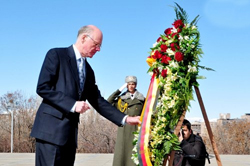
On March 6, the delegation headed by the President of the Bundestag of the Federal Republic of Germany Norbert Lammert, accompanied by the Deputy Speaker of the National Assembly of the Republic of Armenia Hermine Naghdalyan, visited Tsitsernakaberd Memorial Complex.
The President of the FRG Bundestag laid a wreath at the Memorial of the Armenian Genocide victims after which the members of the delegation put flowers at the Eternal fire and honored the memory of the innocent victims with a minute of silence. Norbert Lammert and his delegation, accompanied by the director of AGMI Hayk Demoyan, visited the Armenian Genocide Museum where they got acquainted with the exhibition items of the museum. The President of the FRG Bundestag left a note in the Commemoration Book expressing his support to the Armenian nation.
It should be noted that, the National Assembly of FRG has recognized the Armenian Genocide on July 15, 2005.
President of OSCE Parliamentary Assembly Riccardo Migliori Visited Tsitsernakaberd Memorial Complex
20.02.2013
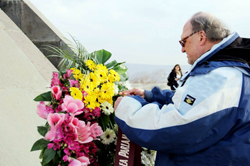
On February 19, President of OSCE Parliamentary Assembly Riccardo Migliori visited Tsitsernakaberd Memorial Complex to pay tribute to the memory of the Armenian Genocide Victims. Riccardo Migliori laid a wreath at the Memorial of the Armenian Genocide victims and honored the memory of the innocent victims with a minute of silence.
President of OSCE Parliamentary Assembly Riccardo Migliori and his accompanying delegation visited the Armenian Genocide Museum and got acquainted with the archive documents concerning the Armenian Genocide. Migliori left a note in the Commemoration Book.
The members of the delegation also had a tour of the Memorial Alley where Riccardo Migliori, President of OSCE Parliamentary Assembly, planted a fir.
Armenian Genocide Education Initiative in the school curriculum of New Jersey
05.02.2013
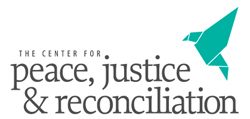
Deputy Director of AGMI Suren Manukyan participated in the workshop of Armenian Genocide Education Initiative launched by The Center for Peace, Justice and Reconciliation (CPJR), in conjunction with the Northern Valley Curriculum Development Center on Jan. 7, 2013.
Designed to help teachers meet the NJ state standard that mandates the teaching of genocide, the initiative provides professional development workshops, curriculum materials, and other support to educators in secondary schools.
Teachers throughout the district attended the first workshop focusing on the Armenian genocide, led by Prof. Tom La Pointe and Dr. David Eichenholtz and the Associate Director of Rutgers Center for the Study of Genocide, Conflict Resolution and Human Rights, Prof. Nela Navarro.
Largely regarded as the first genocide of the 20th century, the Armenian genocide provided a template for understanding how patterns of violence and prejudice can lead to mass atrocity. Workshop facilitators connected these patterns to the ongoing concern with violence in schools.
RF Defense Minister Sergei Shoigu Visited Tsitsernakaberd Memorial Complex
04.02.2013
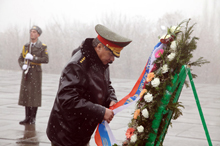
On January 29, Sergei Shoigu, Minister of Defense of the Russian Federation, who arrived in Armenia at the invitation of Ministry of Defense of the Republic of Armenia and his accompanying delegation headed by RA Minister of Defense Seyran Ohanyan visited Tsitsernakaberd Memorial Complex. The delegation arrived from the Russian Federation was accompanied by the director of the Armenian Genocide Museum-Institute Hayk Demoyan.
RF Defense Minister laid a wreath at the memorial of the Armenian Genocide victims after which the members of the delegation put flowers at the Eternal fire and honored the memory of the innocent victims with a minute of silence.
Bidzina Ivanishvili Paid Tribute to the Memory of the Armenian Genocide Victims
18.01.2013
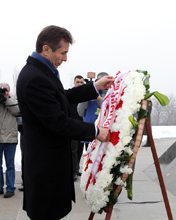
Prime Minister of Georgia Bidzina Ivanishvili and his delegation, who arrived in Yerevan on January 17, visited Tsitsernakaberd Memorial Complex accompanied by the Minister of Culture of the Republic of Armenia Hasmik Poghosyan and the director of the Armenian Genocide Museum-Institute Hayk Demoyan.
The members of the delegation put flowers at the Eternal Fire and honored the memory of the innocent victims with a minute of silence.
It should be noted that in 2004 and 2009 President of Georgia Mikheil Sahakashvili visited Tsitsernakaberd Memorial Complex.
| 




